Introduction
All of us regularly make mistakes of judgment based on faulty analysismistakes as minor as buying the wrong brand of cereal at the grocery and as major as investing a million dollars in a losing enterprise. While some of these errors can be blamed on a lack of information or education, most occur because of the way our minds work. Our minds frequently mislead us, giving us a false understanding of events and circumstances and causing our analysis of events and circumstances to be flawed. In some cases, the consequences can be costly, even deadly.
But we dont have to passively accept the analytic batting average that nature has given us. By learning about the mental barriers and pitfalls that impede effective analysis and acquiring the skills and techniques to overcome them, our batting average can be improved, and significantly so. That improvement might be the determining factor in a decision that is crucial to personal happiness, professional success, or even life itself. The skills and techniques I speak of are what this book is about: ways of organizing, or structuring, our analysis of problems.
The book explains what it means to structure analysis; identifies and describes the mental traits that tend to lead us astray; explains how structuring our analysis of problems overcomes the ill effects of these traits; describes fourteen easily understood structuring techniques; and provides exercises through which the reader can begin to master them.
Exactly what does structuring ones analysis mean? The word analysis means separating a problem into its constituent elements. Doing so reduces complex issues to their simplest terms.
One can find countless informative descriptions of this approach in any library. One I find especially appealing is that of the English philosopher Bertrand Russell, who in 1901 wrote in his classic Principles of Mathematics that, with regard to interpreting the language of philosophic theories, the solution is the analytic method the breaking down of language until a theory shows itself to be either a set of sensible substatements or just nonsense. In this way, he said, many philosophic problems just disappear. Russells book changed the way English philosophy was conducted by establishing the analytic approach as the only reputable method of studying philosophical questions.
To structure ones analysis means separating the constituent elements of a problem in an organized way. An example of structuring is the diagram we were taught in elementary school for doing division:)  . Most of us visualize this diagram when we do division in our heads. Another familiar structuring device is the fearsome IRS Form 1040, which breaks down the process of computing ones taxes into a manageable, though complex, series of steps. Indeed, we use such devices all the time.
. Most of us visualize this diagram when we do division in our heads. Another familiar structuring device is the fearsome IRS Form 1040, which breaks down the process of computing ones taxes into a manageable, though complex, series of steps. Indeed, we use such devices all the time.
Our normal approaches to analyzing problems are usually adequate for dealing with 90 percent of our problems. Its the other 10 percentthe big problems, the ones that matter mostwhere these normal approaches are unlikely to give us a better solution. All of us want to make sound, effective decisions in our professional and private lives, but thats not easy when the problems we face are complex and manifold. And in the pell-mell pace of modern living, we usually dont have the time or patience to seek the best solution. The crushing necessity to make the problem go away now makes us receptive to any solution that will provide even temporary relief from an oppressive situation. In this pressure-cooker atmosphere it is difficult to fully resolve, much less fully understand, the problems that confront us. We therefore tend to make do with partial solutions that we justify, not altogether incorrectly, as the best we could do under the circumstances.
We settle for partial solutions because our minds simply cant digest or cope with all of the intricacies of complex problems. We thus tend to oversimplify, hopping from one problem to another like jittery butterflies, alighting briefly and only on those elements we can comprehend and articulate and to which we can confidently assign values and probabilities. Having done so, we are then satisfied to downplay and disregard those elements we do not comprehend and to which we cannot confidently assign values or probabilities.
If we are to solve problems, from those confined to a single individual to those afflicting whole nations, we must learn how to identify and break out of restrictive mind-sets and give full, serious consideration to alternative solutions. We must learn how to deal with the compulsions of the human mind that, by defeating objective analysis, close the mind to alternatives. Failure to consider alternatives fully is the most common cause of flawed or incomplete analysis.
In other words, we must learn how to keep an open mindone of the most difficult things we human beings can do. So any technique we can impose on the mind to force it open is helpful. It should come as no surprise, then, that all of the techniques presented in this book have the effect of opening the mind. The fact is, structuring ones analysis is the quickest, surest path to opening the mind to alternatives.
Dont confuse analysis with structuring; they arent the same thing. Structuring is to analysis what a blueprint is to building a house. Would you build a house without a blueprint? You could, of course, but theres no telling what youd end up with. Building a house, building anything, without a plan is, to say the least, ill advised. And what structuring is to a blueprint, the techniques of structuring are to a carpenters toolsnot components of a single, unified system for analyzing problems but an assortment of techniques that can be used singly or in combination, as a problem requires. And different problems usually require different analytic tools.

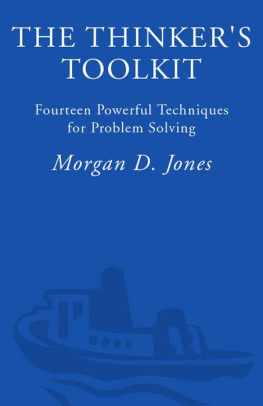
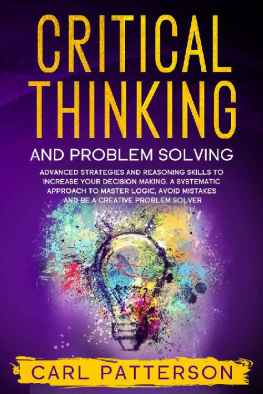
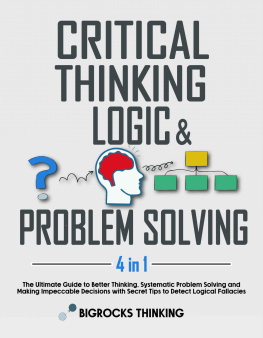
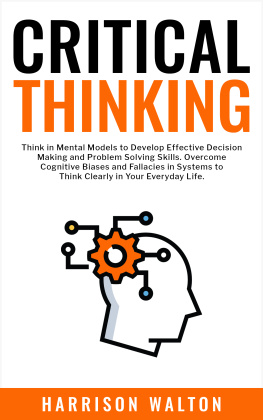


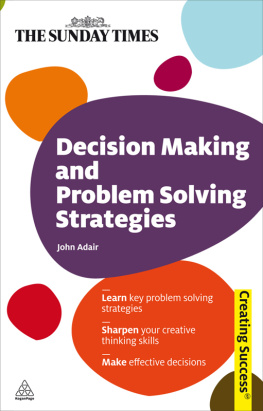
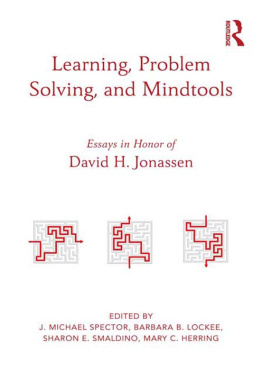
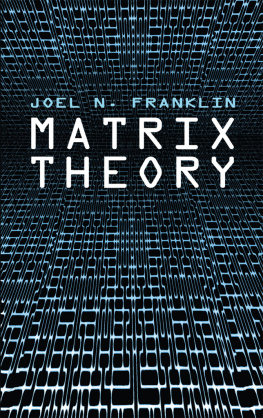


 . Most of us visualize this diagram when we do division in our heads. Another familiar structuring device is the fearsome IRS Form 1040, which breaks down the process of computing ones taxes into a manageable, though complex, series of steps. Indeed, we use such devices all the time.
. Most of us visualize this diagram when we do division in our heads. Another familiar structuring device is the fearsome IRS Form 1040, which breaks down the process of computing ones taxes into a manageable, though complex, series of steps. Indeed, we use such devices all the time.